The PCT Gear Guide: Class of 2018 Survey
Check out the most recent PCT Gear Guide here.
In the second installment of our look at the Pacific Crest Trail Thru-hiker Survey, we are taking a deep dive into the gear hikers on the Pacific Crest Trail used this year. This includes not only what PCT gear was the most common, but what PCT gear performed best over the course of the trail (and what PCT hikers would do differently were they to do it all again).
I’ve organized this post in a way that I hope will give a comprehensive picture of what gear PCT thru-hikers are using. This post covers the Most Common Gear (backpacks, shelters, sleeping bags, sleeping pads, water treatment, stoves, bear canisters, trekking poles, shoes), the Base Weights of different categories of hikers and how they stack up to one another, the Favorite Gear (same as “most common”), Women-specific Gear, Disliked Gear, how much was spent on Gear, thru-hiker Comments on Gear, and finally, a bit of gear Advice.
Despite my best efforts, I am sure that some of you will come up with data or comparisons you would like to see that I have overlooked. My hope is to make this a useful resource for PCT hikers, so if there’s anything that you think is missing, please leave a comment or email me. Please note, I made an honest effort to collect as much data as I could, but this does not mean there’s anything scientific about the results. Not everyone who hiked the PCT this year filled out this survey, so this isn’t necessarily representative of the reality on the trail. I did my best to make sure this accurately reflects the data collected from this year’s Pacific Crest Trail class and to remove any obviously bad data.
That being said, I hope you enjoy the PCT Gear Guide brought to you by the PCT Class of 2018.
NOTE: A list of the different hiker categories and how they are identified can be found at the end of this post.
JUMP TO A SECTION

NOTES ON THE DATA
- This year we had 502 completed surveys.
- Some responses to some questions have been sorted and colored in hopes of more usefully and accurately presenting the data (explanations below).
- Not all PCT hikers document the stats of their thru-hike (yes, I’m weird). Because of this, the data is not 100% guaranteed accurate (again, this is not science we’re dealing with).
- For simplicity, I refer to the survey respondents collectively as this year’s “class“. Remember this is only a fraction of this year’s PCT hikers and it is not necessarily representative of the entire PCT Class of 2018.
- I will be releasing more detailed survey posts focused on PCT Resupply, PCT Demographics, and PCT Advice in the coming weeks. If you would like to be notified of new surveys, click here.
Labels differentiating hiker segments:
- THRU: Thru-hikers (all)
- FINISH: Thru-hikers (all) who completed the entire PCT
- NOFINISH: Thru-hikers (all) who did NOT complete the PCT
If NO LABEL has been appended to a data point, then I used all data collected (this includes section hiker data).
THE FAVORITE PCT GEAR
We’ve covered the most common gear from the Pacific Crest Trail this year, but that doesn’t necessarily tell us what gear worked best (or didn’t work at all). That’s why I also ask hikers whether they are happy with their gear’s performance. No point in doing what everyone else is doing if they’re all doing it wrong, right?
NOTES ON THE DATA:
- All the weight (and for backpacks, capacity) for all the products below are for the product in a size medium (backpacks) or regular (sleeping bags and pads) unless otherwise noted.
- I only included items here that were used by AT LEAST ten hikers. Why ten? Because that’s the number I arbitrarily decided on – I already told you, this isn’t scientific.
FAVORITE PCT BACKPACK:
The ULA Catalyst was favorite pack among PCT thru-hikers this year. It is a 48 oz / 1.361 kg pack capable of carrying up to 75 L and 40 lbs / 18 kg.




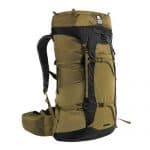
*I grouped the Hyperlite Mountain Gear Southwest and Windrider together because they are the same pack but one has Dyneema exterior pockets and the other has mesh exterior pockets.
FAVORITE PCT SHELTER:
The MSR Hubba NX was the favorite shelter of Pacific Crest Trail thru-hikers this year. It’s a one-person, free-standing shelter weighing in at 39 oz / 1.106 g. Despite it being the heaviest of the top five favorite, it was the only one with a perfect 3/3 rating.





FAVORITE PCT SLEEPING BAG:
The Western Mountaineering Versalite was the most popular sleeping bag for Pacific Crest Trail thru-hikers last year. I can persoanally attest to the awesomeness of this sleeping bag as I used it on the Continental Divide Trail and never once had a cold night. For more information, check out me detailed review.





Since sleeping bags often come in many options (length/width/fill-power), I used “Regular” lengths and widths for the above table (and assumed a bag that would fit someone who was 5’10” / 178 cm).
FAVORITE PCT SLEEPING PAD:
The Sea to Summit UltraLight Insulated sleeping pad was this year’s favorite among PCT hikers with everyone who used it giving it a perfect 3/3 rating. This pad has a two-way valve that makes inflating and deflating it very quick and easy.





FAVORITE PCT STOVE:
The SOTO WindMaster was the favorite stove for PCT hikers this year with all hikers who used it giving it a perfect 5/5. It is a bit expensive for a stove that doesn’t have an integrated pot, but perhaps it’s worth the investment?





FAVORITE PCT WATER TREATMENT:
The Sawyer Squeeze was favorite water treatment system for PCT thru-hikers this year. That said, shout out to SteriPENs which also received high marks (though they were not widely used).





FAVORITE PCT TREKKING POLES:
The Black Diamond Distance Carbon Z were the favorite trekking poles among PCT hikers this year. Note: the Leki Cristallo poles also received a 3/3 rating, but more hikers used the Black Diamond poles so they’re ranked higher here.



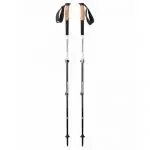

FAVORITE PCT SHOES:
The Brooks Cascadia 12* were the favorite among PCT hikers this year which is surprising since last year people hated Brooks. Comeback? Thru-hikers who finished used an average of 4.2 pairs of these shoes on their hikes for a total cost of $546.





*The Brooks Cascadia 12 has been replaced by the Brooks Cascadia 13.
**The Hoka Speedgoat 2 has been replaced by the Hoka Speedgoat 3.
***The Altra Lone Peak 3.0 and 3.5 have been replaced by the Altra Lone Peak 4.0.
A WORD ABOUT SHOES
Even if you knew for certain that each pair of your shoes would last you 700 mi / 1,125 km, buying yourself four pair of shoes at the start of the hike would be a risky decision – what if the shoes aren’t as comfortable as you thought? What if your feet swell? What if you die?
Remember, you can buy shoes using this thing called the internet and have them mailed ahead on the trail (to a post office, hotel, local outfitter, trail angel, etc.) once you know that you’re going to need a new pair. And if you encounter an emergency situation, you can always buy locally or simply wait around for your shoes to show up in the mail.
MOST COMMON BEAR CANISTER*:
The BV500 was the most common bear canister this year. Bear canisters must be carried north of Lone Pine, but most hikers begin carrying them at Kennedy Meadows They can stopped being used at Bridgeport (but must also be carried in Lassen Volcanic National Park).


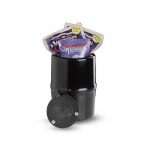


*I did not ask for a rating on bear canisters since there is a limited number of them and they are really just a necessary evil more than anything else. Therefore, I have simply included the most common bear canisters here (this information is repeated below in the most common gear list).
THE FAVORITE GEAR LIST
Now, let’s put together a gear list that PCT thru-hikers would (supposedly) be happy to carry. Here’s what we’ve got:








*The Brooks Cascadia 12 has been replaced by the Brooks Cascadia 13.
The cumulative retail purchase price of this gear list? $1,805. Yes, being a homeless mountain person is a lot more expensive than most people imagine. Now, let’s look at something that nobody but hikers, and more specifically thru-hikers, really cares about: how much all this stuff weighs.
- BIG THREE (PACK+SHELTER+SLEEPING BAG): 7 lbs 7 oz / 3.374 kg
- BIG FOUR (BIG 3+SLEEPING PAD): 8 lbs 7.9 oz / 3.853 kg
- EVERYTHING (MINUS BEAR CANISTER): 9 lbs 1.9 oz / 4.136 kg
- EVERYTHING (INCLUDING BEAR CANISTER): 11 lbs 10.9 oz / 5.298 kg
Obviously, this is still missing a lot of gear (rain gear, warm jacket, headlamp, extra clothing, and whatever else people throw in their packs). However, it doesn’t get us anywhere close to the AVERAGE STARTING BASE WEIGHT (that is, pack’s weight not including consumables such as food, water, and your poop paper) of this year’s thru-hikers: 19.49 lbs / 8.84 kg. Also, note that the stove included in this list, the SOTO WindMaster, does not inckude the weight of a pot.
Now, before we get to the most COMMON GEAR, let’s take a closer look at hiker base weight now, shall we?
The drop in base weight between the start and end of all our hiker categories tells us something – people are bringing things they don’t need (but definitely bring those wet wipes, those are clutch – but also, pack them out, you ass).
So what can we see between those hikers who completed the trail and those who failed the trail? Well, hikers who completed the trail began with a base weight that was, on average, 2.17 lbs / 984 g lighter than hikers who did not finish the trail – that’s more than 10% lighter.
Next, we’re going to look at how the pre and post-hike base weights compare between people who were thru-hiking their first long-distance trail and those who had already done a long-distance thru-hike.
Just as we saw last year, the data again makes a(n unscientific) case for getting your base weight down. That does NOT mean that you have to have a crazy sub-five-pound (2.3 kg) base weight to finish your thru-hike. No, you don’t even need to have a sub-ten-pound (4.6 kg) base weight. What you need to do is not bring things you don’t need (the cheapest and most effective way to cut your base weight). Don’t fall into the trap of thinking that the way to get your base weight down is to spend another $250 to cut 5% of your tent’s weight; no, the way to cut weight is to not bring that extra pair of “town clothes”.

Plenty of people have happy and successful thru-hikes with all ultralight gear. However, people can also have happy and successful thru-hikes with packs much heavier than this arbitrary “average” we’ve found here. Gear selection is personal. Ultimately, if you’re happy to carry something and/or it improves the quality of your hike, then nobody has the right to tell you that you shouldn’t have it (and if they do, tell them that Mac said to get fucked).
That said, if the Pacific Crest Trail is going to be your first stab at a long-distance hike and you fall in to the camp of “I have little/no idea what I’m doing/getting myself into”, then there are strategies to mitigate your risk of failing to go the distance. One of the best resources reported by this year’s PCT class was former thru-hikers. Well, this year’s class now falls into the category of “former thru-hikers” and a lot of the gear comments are instructing you, future hiker of the PCT, to think long and hard about what gear you want to bring.
Take some time to think about what you NEED on the trail; not what you want, what you need. Don’t say I didn’t try to warn you when you decide to bring extra weight and then end up sending everything home (because most of you will ignore this advice and bring a bunch of unnecessary gear, and if you don’t then I’ve done my job).
THE MOST COMMON PCT GEAR
So we know what hikers liked, but what about what most people were carrying?
Afterall, hiking the PCT is all about fitting in and being a sheep. So what was the most common PCT gear on the trail this year? Using the data, we’ll construct an “average” Pacific Crest Trail hiker’s gear list. Let’s start where we left off in the survey, and review the MOST COMMONLY USED GEAR from this year’s PCT class.
Remember, this is the most commonly used gear – simply because something was common, this does not necessarily translate to it automatically being the “best” (or even good). Remember, further up in this post we looked at hikers’ favorite gear.
NOTE: All the gear in the charts below is listed in order of most common (at the top) to less common (at the bottom).
MOST COMMON BACKPACK:
The Osprey Exos was the most common pack for PCT thru-hikers this year. It comes in both 48 and 58-liter versions, but the 58-liter pack was the most common among PCT hikers. Read my detailed review of it here.





*I grouped the Hyperlite Mountain Gear Southwest and Windrider together because they are the same pack but one has Dyneema exterior pockets and the other has mesh exterior pockets.
MOST COMMON SHELTER:
The Zpacks Duplex was the most common shelter for Pacific Crest Trail thru-hikers this year – it also had the lowest rating of the five most-common shelters used by PCT hikers. The rest of the top five were all Big Agnes shelters.
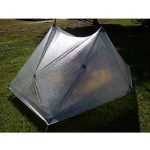




MOST COMMON SLEEPING BAG:
The Enlightened Equipment Revelation 20° was the most common sleeping bag for Pacific Crest Trail thru-hikers last year (and it’s a quilt). This quilt is available as an “off the shelf” model, or is customizable (fill power, length, color) if you want to spend a bit more.


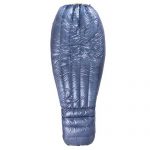


Since sleeping bags often come in many options (length/width/fill-power), I used “Regular” lengths and widths for the above table (and assumed a bag that would fit someone who was 5’10” / 178 cm).
MOST COMMON SLEEPING PAD:
For the third year in a row, the Therm-a-Rest NeoAir XLite was the most common sleeping pad for Pacific Crest Trail thru-hikers this year. In fact, the Therm-a-Rest brand pretty much dominated the entirety of the sleeping pads reported.





MOST COMMON STOVE:
The MSR PocketRocket 2 was the most common stove for Pacific Crest Trail thru-hikers last year. However, 18% of respondents said they went stoveless on the trail (something to keep in mind).





MOST COMMON WATER TREATMENT:
The Sawyer Squeeze was the most common water treatment system for PCT thru-hikers this year (again). Remember, you do not need a treatment for viruses on the PCT (at least that’s the word in the mountains).





MOST COMMON BEAR CANISTER:
The BV500 was the most common bear canister this year. Bear canisters must be carried north of Lone Pine, but most hikers begin carrying them at Kennedy Meadows They can stopped being used at Bridgeport (but must also be carried in Lassen Volcanic National Park).





MOST COMMON TREKKING POLES:
The Black Diamond Alpine Carbon Cork were the most common trekking poles on the PCT this year. They’re a $170 pair of cork-grip, carbon fiber poles that weigh in at 17 oz / 482 g.





MOST COMMON SHOES:
The Altra Lone Peak 3.5 were the most common shoes on the PCT this year. They have a 0 mm heel-to-toe drop, and thru-hikers who finished the PCT used an average of 4.4 pairs of these shoes for a total cost of $528.





*The Brooks Cascadia 12 has been replaced by the Brooks Cascadia 13.
**The Hoka Speedgoat 2 has been replaced by the Hoka Speedgoat 3.
***The Altra Lone Peak 3.0 and 3.5 have been replaced by the Altra Lone Peak 4.0.
THE MOST COMMON GEAR LIST
Knowing what we know now, we can begin to assemble a PCT gear list for this year’s PCT class. Here’s what we’ve got so far:








The cumulative retail purchase price of this gear list? $1,730. Just a bit cheaper than the favorite gear list ($75 less). Now for the weight (honestly, if this is your first thru-hike that you’re planning for, don’t fall into the trap of caring about a couple of ounces/grams).
- BIG THREE (PACK+SHELTER+SLEEPING BAG): 4 lbs 15.6 oz / 2.25 kg
- BIG FOUR (BIG 3+SLEEPING PAD): 5 lbs 11.6 oz / 2.6 kg
- EVERYTHING (MINUS BEAR CANISTER): 6 lbs 1.2 oz / 2.756 kg
- EVERYTHING (INCLUDING BEAR CANISTER): 8 lbs 10.2 oz / 3.918 kg
THE WOMEN’S GEAR
Previous Pacific Crest Trail Survey patrons have voiced the want for women-specific gear recommendations. Well, my friends, ask and you shall receive, for I am a benevolent data god.
I am not going to go into as much detail as I did above for the favorite and most common gear, nor will I be making recommendations on all the gear (I don’t don’t see how sex plays into stove or water treatment preferences). Here, I’ll be talking about BACKPACKS, SLEEPING BAGS, SLEEPING PADS, and SHOES.
Again, I am making my best effort to provide useful information here (if I fail in doing so you are invited to gently make suggestions in the comments).





*The Brooks Cascadia 12 has been replaced by the Brooks Cascadia 13.
It turns out that the favorite gear among women is exactly the same as the favorite gear overall.
However, one thing to note is that the Osprey Exos, in addition to being the most common pack overall, was the second-favorite pack among female hikers (with a rating of 4.72/5).

Lastly, here are some gear comments from female thru-hikers:
- As a woman, I would probably get the Western Mountaineering Versalite instead, as I was cold most nights in Washington and could have done with a warmer sleeping bag. (This hiker was using the Western Mountaineering UltraLite.)
- Not really a pack for women. (This hiker was using a Gossamer Gear Mariposa.)
- Bad fit for my body, women-specific straps are unhelpful if you don’t wear a bra and caused chafing on my arms, not durable at all, heavy, poor pocket design, and doesn’t cinch small enough. (This hiker was using a Gossamer Gear Mariposa.)
- Way too narrow for a human – especially a woman with hips – and not true to rating. (This hiker was using a Zpacks Sleeping Bag.)
- Didn’t fit well, not for females. (This hiker was using a Zpacks Arc Haul.)
MOST DISLIKED GEAR
That’s great that we know what was common and what hikers liked, but what about what hikers DIDN’T LIKE. That is, what gear might be best to avoid or at least think about carefully before purchasing?
NOTES ON THE DATA:
- Similar to the favorite gear above, here I only included gear that was used by AT LEAST 10 hikers.
- To be considered “disliked” a piece of gear needs to have a satisfaction rating of BELOW 80%.
- If no item in a particular category met the 10-hiker and under 80% criteria, that category has been omitted below.
- I’ve attached a comment (from a hiker who used the item) to each piece of gear.
MOST DISLIKED BACKPACKS:
- 3.45/5 – Osprey Eja – Weirdly shaped straps, dug into shoulders, no hip belt pockets.
- 3.75/5 – Zpacks Arc Blast – Too delicate for a thru-hike, does not carry weight comfortably, not waterproof.
- 3.77/5 – Zpacks Arc Haul – Uncomfortable with loads over 25 lbs / 11.34 kg – fallen apart so badly by the end that it was unusable and barely even made it to Canada, customer service failed to mail stuff to repair it.
- 3.82/5 – Osprey Aura AG – Too big/bulky/heavy.
MOST DISLIKED SLEEPING BAGS:
- 3.77/5 – Zpacks Sleeping Bag – Temperature rating not correct. Also the thread they use to sew everything isn’t strong enough and it has a terrible zipper.
MOST DISLIKED WATER FILTERS:
- 3.78/5 – Katadyn BeFree – The Katadyn BeFree filter started so fast and a week or two later it was SO SLOW, SO SLOW.
- 3.80/5 – Aquamira – Mixing two liquids was difficult and Aquamira was not always available. Also, still drank particules.
- 3.85/5 – Sawyer MINI – Sawyer Mini has too little flow. Used my partner’s Sawyer Squeeze most of the time.
WHERE TO INVEST
So now that we know what was the most favorite and what was the most common (and what was the most garbage), let’s look at where this year’s class spent their AVERAGE OF $1,565 (σ = $830) on gear before beginning their thru-hikes. Here, we’ll also look at the average temperature rating of hiker sleeping bags, how big everyone’s packs were, and who had a freestanding shelter.
As a bonus, I’ve included a look at how these numbers differ between hikers who finished and those who did not finish.
- THRU – AVERAGE AMOUNT SPENT ON GEAR | $1,565 (σ = $830)
- THRU (ON FIRST THRU-HIKE) – AVERAGE AMOUNT SPENT ON GEAR | $1,644 (σ = $804)
- THRU (NOT ON FIRST THRU-HIKE) – AVERAGE AMOUNT SPENT ON GEAR | $1,372 (σ = $867)
- FINISH – AVERAGE AMOUNT SPENT ON GEAR | $1,534 (σ = $832)
- NOFINISH – AVERAGE AMOUNT SPENT ON GEAR | $1,682 (σ = $818)
- THRU – AVERAGE SLEEPING BAG TEMPERATURE RATING | 17.2°F / -8.2°C
- FINISH – AVERAGE SLEEPING BAG TEMPERATURE RATING | 17.32°F / -8.16°C
- NOFINISH – AVERAGE SLEEPING BAG TEMPERATURE RATING | 16.84°F / -8.42°C
- THRU – AVERAGE BACKPACK SIZE | 56 L (σ = 10.1)
- FINISH – AVERAGE BACKPACK SIZE | 56 L (σ = 9.9)
- NOFINISH – AVERAGE BACKPACK SIZE | 56 L (σ = 10.8)
- THRU – FREESTANDING SHELTER?
- 38% – Freestanding
- 15% – Semi-freestanding
- 47% – Not freestanding
- FINISH – FREESTANDING SHELTER?
- 37% – Freestanding
- 16% – Semi-freestanding
- 47% – Not freestanding
- NOFINISH – FREESTANDING SHELTER?
- 40% – Freestanding
- 11% – Semi-freestanding
- 49% – Not freestanding

What’s interesting about this? Nothing. All of this information is useless and you’re just reading this to make yourself feel better about the hike you’ve had or are going to have.
Or maybe I’m wrong and somewhere hidden in here the key to a successful thru-hike.
THE TECHNOLOGY
This year I’ve also asked hikers about the devices and apps they’re using on the trail (because how are you supposed to survive in nature without your phone aka camera aka compass aka audio-listening device aka note-taking device aka television aka pooping entertainment?).
First, a look at the split between Android and iOS devices (and the poor fools still somehow stuck with a Windows phone or equally unsupported device).
- WHICH KIND OF PHONE DID YOU USE?
- 53.5% – iOS
- 44.1% – Android
- 4.4% – Other (also possibly people who don’t understand what iOS or Android are)
- 0.2% – I don’t have a phone
And now for the Pacific Crest Trail apps (unless you’re a member of the 4.6% of hikers still living in the past). Here are the most popular PCT apps among hikers this year:
Atlas Guides (also known as Guthook) was the most popular app used by Pacific Crest Trail hikers this year with a reported 86% of hikers using the app. This is a full-featured app developed specifically for the PCT. It includes offline maps, waypoints, photos, elevation profiles, and user comments.
Halfmile was the second most popular app used by Pacific Crest Trail hikers this year with 48% of hikers reporting to have used it. This is a (free) app that developed specifically for the PCT. It includes offline trail data including waypoints, mileage information, and elevation data.
Update: The Halfmile app has been discontinued.
Hikerbot is a newer app on the PCT scene and was used this year by a reported 10% of hikers. It includes trail data sourced from hikers, offline maps, elevation profiles, location sharing, and a powerful search function. It’s currently only available on Android phones.
Gaia is a powerful backcountry navigation tool that was used by 6% of hikers. It’s not specifically designed for the PCT, but it allows the use of multiple offline map sources as well as the import and recording of GPS tracks.
PeakFinder AR was not an app I asked PCT hikers about this year, but it’s one that I am recommending you take a look at. It won’t help you with navigation, but it will help you identify every peak you pass (thus freeing you from conversations/arguments beginning, “I think that’s…”). It works offline and is awesome, just pay the $5 and download it.
THRU-HIKER COMMENTS ON GEAR
Hiker comments on gear can be dangerous when looked at indivivually because like so many things on a thru-hike, what gear you bring (and what gear you ultamately love/hate) is a very personal decision. To give you an idea of what I mean, here are two comments from thru-hikers this year:
- “Don’t believe the Altra hype, hiked 400 miles in the Lone Peaks and they killed my feet.”
- “Altra Lone Peak 3.5 – Perfect.”
So what are we supposed to believe? Altras are amazing? Altras blow? Personally, I’ve never used Altras so I can’t weigh in on the topic, but I hope you have a good idea of why it’s dangerous to take just one random person’s opinion (especially mine).
Better to just trust A LOT of random people’s opinions.
Fortunately, I have A LOT of data reflecting random people’s opinions which means that we can make some slightly more reliable statements on PCT gear than any single hiker can on their own. Here are some HIKER GEAR COMMENTS that reflect the voice of the majority (or just some gear comments that I found particularly interesting):

- Do not buy Zpacks backpacks. Get a sheet of Tyvek for a ground sheet.
- Don’t bring a book. Stupidest piece of gear I had. Use audiobooks instead.
- Don’t buy the cheapest, don’t buy the most expensive. Buy the one with the best customer support (according to PCT hikers)!
- A hiking shirt with a hood is the best sun protection.
- Simply put, everyone has different things that work for them and it’s important to just find what works for YOU and what’s comfortable while still being light.
- Wind/rain gear was my MVP because it was the best defense against mosquitoes.
- Would add more robust rain gear for Washington. Would be more willing to swap gear out.
LAST WORDS OF ADVICE
And finally, a few more concise tips from the PCT Class of 2018 to take into account before your final gear selection:
- Test shoes beforehand.
- Good gear is worth the investment.
- Everyone’s gear needs and walking abilities are different, so trust yourself and don’t worry about what others are doing or carrying.
- Make sure your big FOUR (I’m including footwear in this) are dialed in. If you wanna invest your time and money somewhere, spend it here. And in appropriate clothing. Some of my friends suffered a fair bit in Washington because they didn’t have the right clothing.
- Heavy duty rain coat for Washington + waterproof gloves and socks.
For more on gear, check out my Ultimate Pacific Crest Trail Packing List.
THE CHANGES FROM LAST YEAR
- ADDED BREAKDOWN: Women-specific gear breakdown?
- ADDED QUESTION: Did you use a freestanding tent?
- ADDED QUESTION: Which model of shoe did you use?
- ADDED QUESTION: Did you use trekking poles?
- ADDED QUESTION: Which brand of trekking poles did you use?
- ADDED QUESTION: Which model of trekking poles did you use?
- ADDED QUESTION: What kind of phone did you use on the trail?
- ADDED QUESTION: What app(s) did you use on the trail?
THE CHANGES FOR NEXT YEAR
Here are the changes that I’ve decided on for next year’s survey. If you have any suggestions, I would love to hear them – leave a comment below to let me know.
- FIX: Change all of the gear ratings to five stars and not just three.
- CLARIFY: Ask about people sharing tents and/or sleeping gear to get more accurate results and tease out what gear might be best suited for couples.
THE OTHER PCT SURVEYS

Here are the labels used to differentiate hiker segments:
- THRU: Thru-hikers (all)
- FINISH: Thru-hikers (all) who completed the entire PCT
- NOFINISH: Thru-hikers (all) who did NOT complete the PCT
- NOBO: Northbound thru-hikers (all)
- NOBO-0: Northbound thru-hikers who did NOT complete the PCT
- NOBO-1: Northbound thru-hikers who completed the PCT
- SOBO: Southbound thru-hikers (all)
- SOBO-0: Southbound thru-hikers who did NOT complete the PCT
- SOBO-1: Southbound thru-hikers who completed the PCT
If there is ANYTHING you can think of that would make this information more useful (or any more gear-related cross-referencing you would like to see), then please LEAVE A COMMENT and let me know.
Affiliate Disclosure: This page may contain affiliate links, which means I may receive small commissions for purchases made via these links at no additional cost to you. This helps pay the bills and keep the site up and running. Thank you for your support!
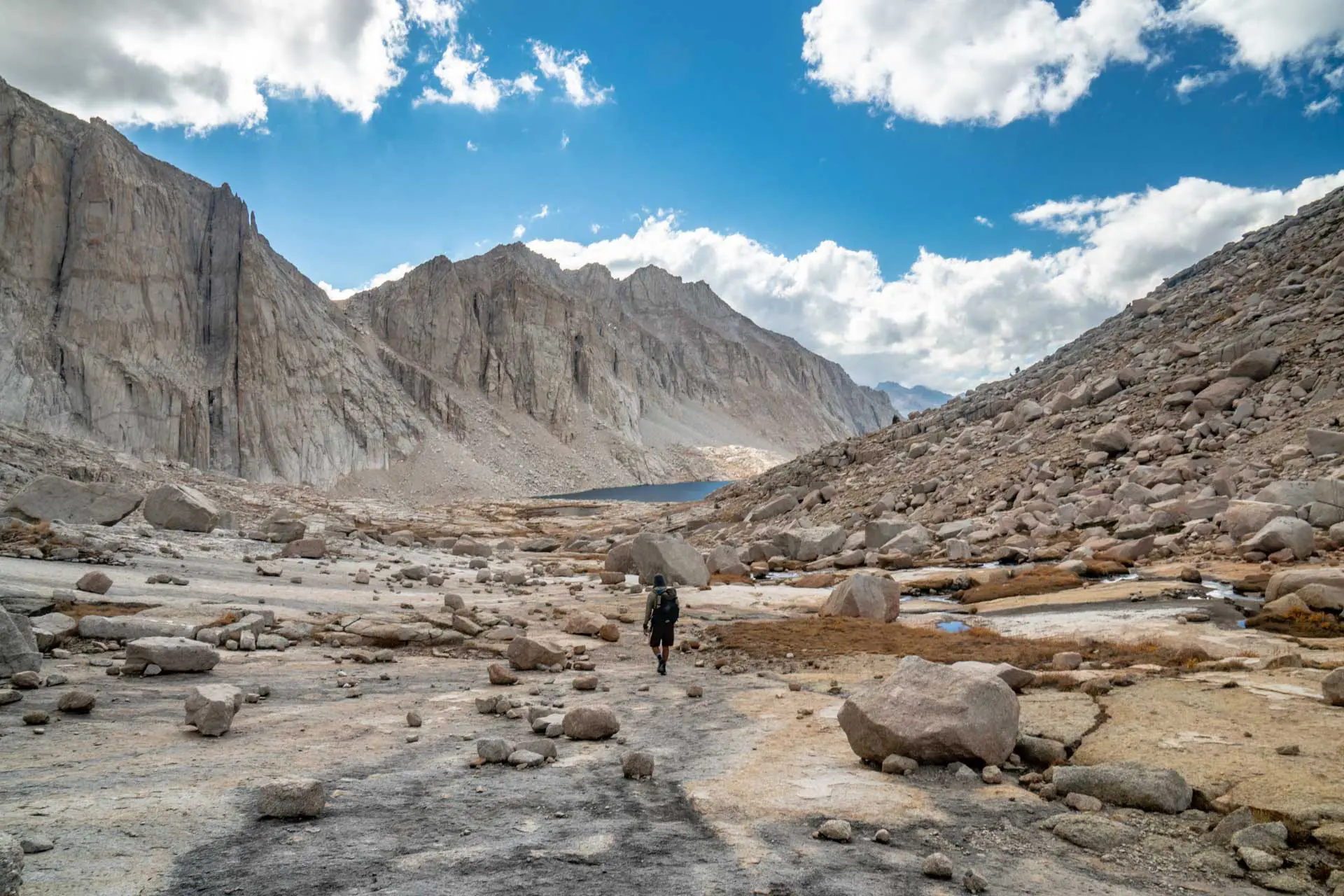






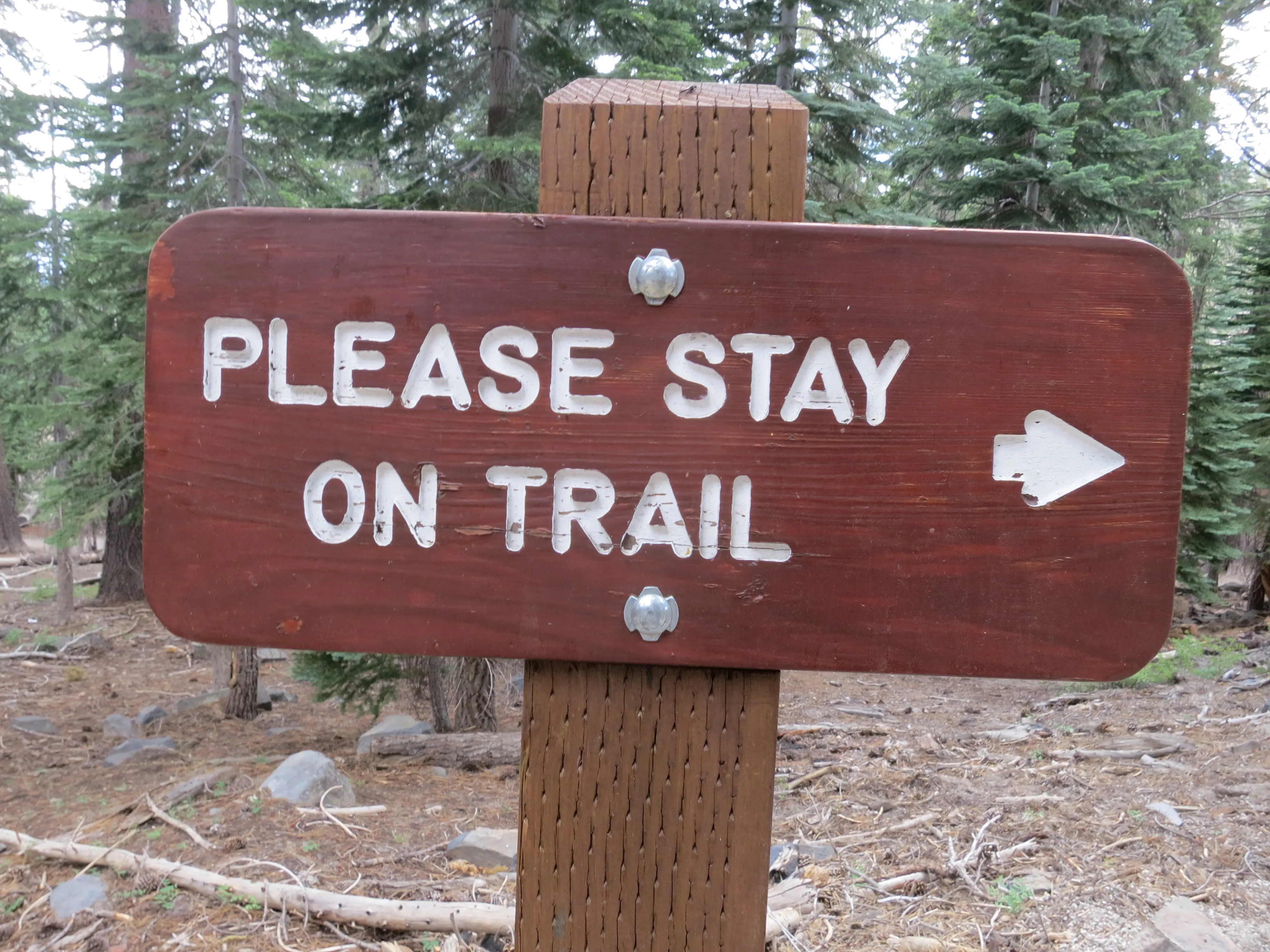
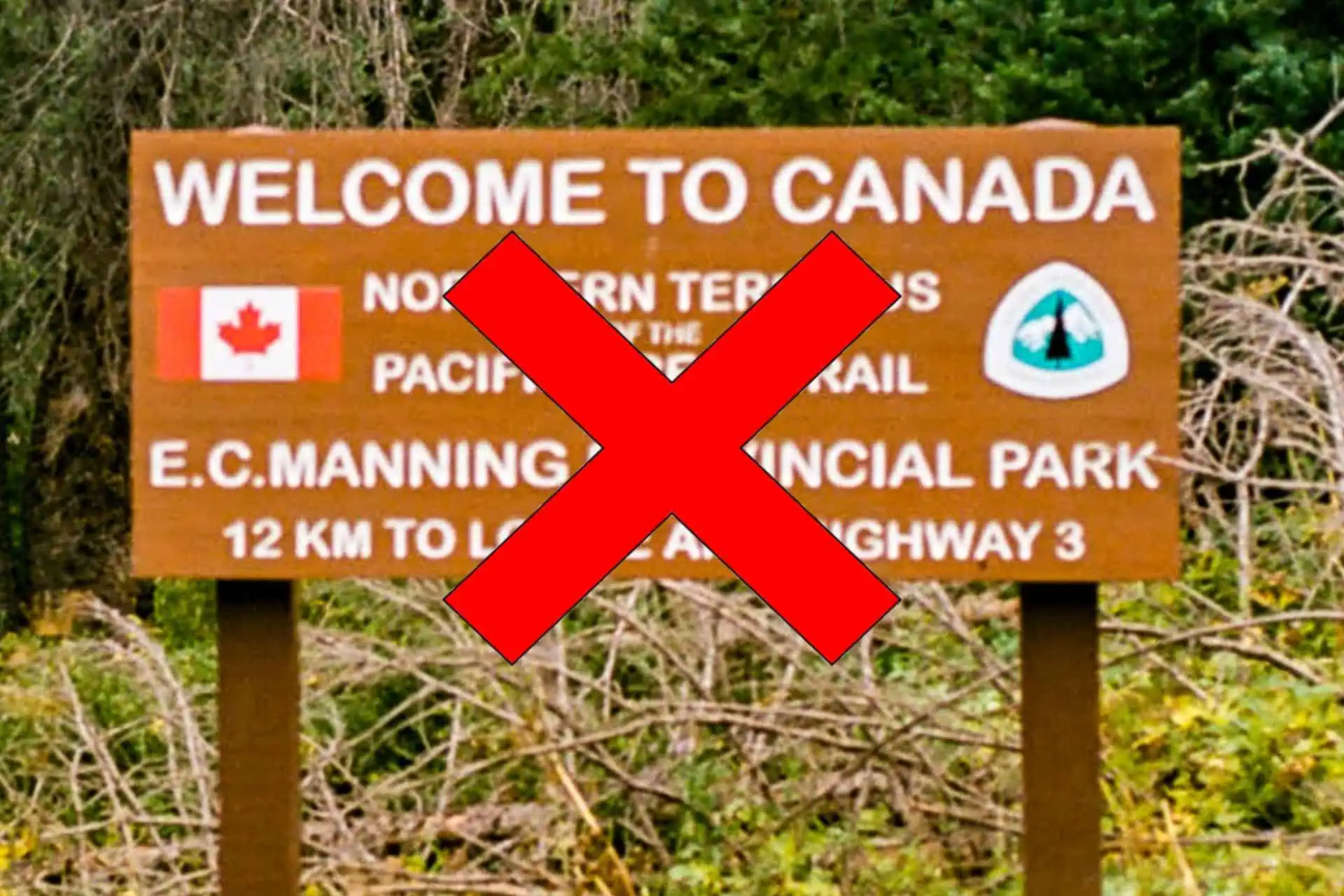
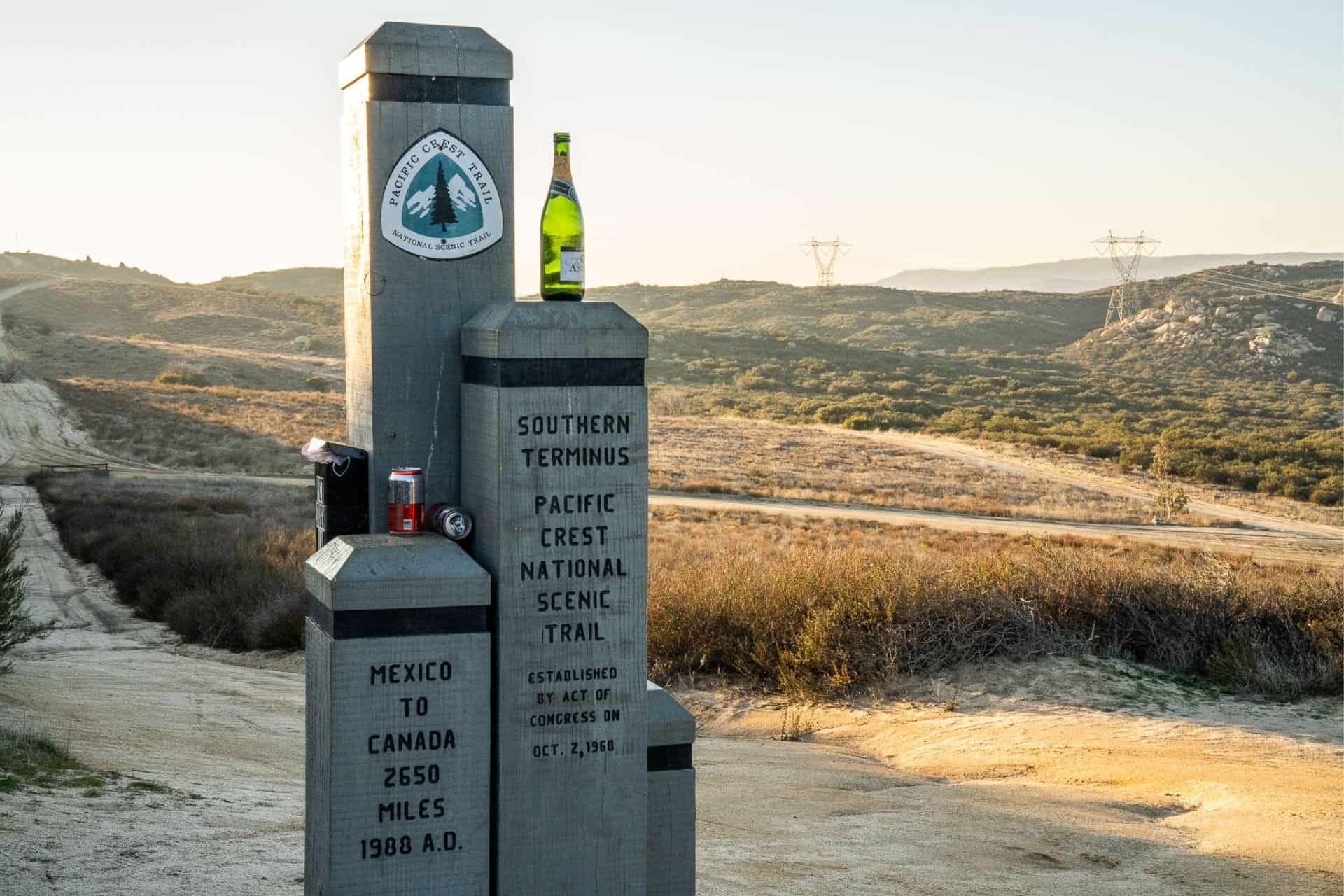


Would you like to consider adding pillow to the list? There is not that much variation?
I will consider this for this year’s. There aren’t a ton of pillow options, but it will be good to see what works best.
Thank you for always providing such useful information to the community. This was such a wonderful and informative post. Any idea when the 2019 Survery will be available? Thanks again!
“”These items are the MOST COMMON items, I will be publishing a detailed breakdown of the PCT Class of 2018’s gear including what hikers liked, what they didn’t like, what made them successful, and how they would change/adapt their gear for a future hike. If you want to be notified when this post is live, enter your email below.”
I’m hoping for that analysis in addition to this. I loved the 2016 analysis:
“LEAST LIKED BACKPACKS: Osprey Atmos AG 65, ULA Circuit
LEAST LIKED SLEEPING BAGS: ZPacks 20°, Enlightened Equipment Revelation 20, REI Igneo
LEAST LIKED SHELTER: MSR Hubba NX 1, Big Agnes Fly Creek UL1
LEAST LIKED SLEEPING PAD: Therm-a-Rest Z Lite SOL
LEAST LIKED WATER TREATMENT: Sawyer MINI
And here are a few more stats I managed to harvest from the data mound:
62% of hikers who would upgrade their WATER TREATMENT were using a Sawyer MINI.
33% of hikers who would upgrade their SLEEPING PAD were using a Therm-a-Rest Z Lite Sol.
33% of hikers who would upgrade their SLEEPING BAG were using a ZPacks or Enlightened Equipment bag.
52% of hikers who would upgrade their SLEEPING BAG were using a bag with a temperature rating of 19°F (-7.2°C) or higher.”
“I asked hikers which piece of gear they would most like to UPGRADE and came up with the following list:
Sleeping Bag (Nobody with a Western Mountaineering UltraLite said they would upgrade their sleeping bag.)
Rain Gear
Backpack
Shelter (Nobody with a Big Agnes Copper Spur UL2 said they would upgrade their shelter.)
Down Jacket
Sleeping Pad (Nobody with a Therm-a-Rest NeoAir XTherm said they would upgrade their sleeping pad.)”
That was invaluable. Who would upgrade, who would not and what, that told me more than almost anything else.
Thank you for the feedback! If the data allows (which I expect it will), I will include this in the 2019 survey results (to be published soon!).
Really fun read, thank you. My suggestion, after converting all the 3 ratings to 5, double everything to give ratings out of 10. Even easier for the brain to compute.
Yeah, the threes were mistakes. They’ve all been changed to 5 for this year. I’ll consider 10-point scale for next year…
Glad I came across this site, and appreciate the info given here. I’ve had a long standing plan to hike from Yosemite to Echo Pass in Tahoe and, unfortunately, 2 years ago someone broke in to my truck…stole my pack and festival gear so I’ve slowly been rebuilding. I am slated to make this trek starting next weekend but I was wondering if you could provide insight in to weather. I wanted to start early August but because of work I had to push it back. I can’t find much reliable info on-line, because some towns close to the trail just don’t show up on the sites. Markleeville does, but it’s 3-4K feet lower in elevation. Anyone have insight in to temp lows in mid to late August? Are we talking teens at night or is freezing about average? Thanks!
Mid to late-August the temps shouldn’t be too cold. Sorry to hear about your pack! That’s the absolute worst :(
In the picture in the middle of the page with the three packs next to each other, could anyone tell me the name of the pack that’s on the left? I recognize the hyperlite on the right and the ULA in the middle of the picture, but was curious about the pack on the left
The backpack on the left is the ULA CDT.
For the average spent on gear, is that just on the major items that you asked about in the survey or is that for all gear? thanks
That’s all gear, but you have to take into account the fact that many people (probably) already own a lot of gear that they bring on their hikes.
It would be helpful to see some reasons why a particular item is highly rated or not particularly liked. For example you wrote that the Z-packs Duplex tent was the most popular tent on the PCT in 2018 yet it had the lowest satisfaction rating of those listed. This doesn’t help me much unless I know why the satisfaction rating was low. The reasons may or may not be applicable to me. Given most people looking at this survey are probably researching gear to buy, having that kind of information is essential if you are making those kinds of statements without supporting information to explain why or why not an item is popular or unpopular. For all I know they didn’t like the colour of the tent or something equally irrelevant to me. Just a suggestion…
I have an option for people to state why they disliked a certain piece of gear, but there’s never enough consensus to warrant adding something to the final post. I will see about making this multiple choice this year to hopefully gather more useful data. Thanks for the feedback!
you should ask about puffy jackets! Since everybody has one and there are some common brands. Maybe rain jackets too. Also a breakdown of the top synthetic sleeping bags would be great, even if they are rare overall – some people don’t want to use down.
I haven’t yet just because there’s a LOT of variation here, but I’ll try it next year and see how things go.
And nice tip on the synthetic bags! I will definitely do this next year.
I would be curious to know the gear weight of hikers male/female that finished with the highest load, I would also be curious to know a prehike survey of people’s thoughts on they’re general pre hike physical conditions before setting out to do the PCT. (are they a daily gym or athletic/ runner active, or do they consider themselves just average health/ fitness wise.)
And how about some quirky trivia like what age was the youngest and the oldest to finish.
I Love this site and the information you provide as a future (hopefully) thru hiker is useful, I’ve looked at gear for several years and have some now already. It’s Nice to see some of my choices on these surveys, I have a feathered friends flicker 20 but I’ve found quilts to be “drafty” and prefer full mummy style. Very happy to see people’s like of the WM versalite, I tested one out at Moosejaw a year ago and it’s been on my “major purchase” list since. Thanks again for your dedication for keeping these surveys going. Dan.
I don’t know if you have seen this post, but it might have some of that trivia you’re looking for: https://www.halfwayanywhere.com/pacific-crest-trail-survey-breakdown
Thanks a lot for this article! Very helpful!
Happy to help!
Interesting info…A suggestion I would have for next year is to do some statistics on it (error bars), or at very least try to show sample size for each rating. I know you set a minimum sample but a pack that’s 4.5/5, but rated by 30 people might actually be the better pack than the 5/5 rated by 10.
Thanks for the suggestion, Simon. I’ll try to improve the representation of this data for next year.
Do you plan on doing clothing options like puffy vs fleece, base layers and rain gear used, sun protection, ect?
I haven’t in the past just because there’s usually so much variation here, but now since I have a much larger sample size this could be something to consider for next year.
First time seeing one of these. Enjoyed your approach to breaking down and sharing the data, well done. Appreciate the effort.
Thanks, Brian!
I would like to see alcohol vs. canister stoves info!
What specifically do you mean? The percentage of people who used alcohol vs. canister stoves?
I’m a little surprised with the obsession with the expensive shoes. I’m a trail runner, climber and thruhiker and I understand how important it is to take good care of your feet.
However, for the last few years I’m just buying whatever trail runners I can find on sale (a lot of them happened to be New Balance and Merrell). I mean – I do check reviews, material, design, etc. to filter out complete outliers, but I’m completely fine with an average modern trail running shoe. Since I’m not looking for a particular brand/model I usually end up paying $30-40 per pair.
I had two pairs of Brooks Cascadia and for the life of me I cannot say that they are more comfortable or durable than cheaper trail runners.
So far I was able to use ANY sneakers for 500+ miles and they all feel like walking on clouds comparing to the mountaineering boots :)
Sure, some people may have very specific needs for their feet, but knowing how frugal the thruhikers are I’m surprised to see the list to be dominated by expensive models year after year.
Well, maybe I’m missing something :)
Shoes are always a complicated issue since everyone has different feet and everyone has a different definition of comfort.
I guess you could argue that shoes are your most-used piece of gear since you generally only have one pair at a time and rarely take them off (except for sleep?).
If it’s an educated choice – sure, go for it. But I kind of feel that herd mentality plays a role here.
Great insights as always! My only comment would be: if you’re going to add a short section on women’s preferred gear, why not also also include a short section on men’s preferred gear? As a dude, here I am wondering whether the Versalite is only rated so highly because of all the cold-sleeping women on the trail. Is it too warm for a man? I can’t tell from this post. Thanks for doing this every year; it really helps.
I guess that makes sense. Next year it is!
But side note: I have a Versalite and it’s amazing.
The reason must be that the Versalite is the warmest bag on the list, at 10F against all the others at 20F. It is also the heaviest and the most expensive. Maybe a 0F bag would be the new #1, who knows.
The reason must be that the Versalite is the warmest bag on the list, at 10F against all the others at 20F. It is also the heaviest and the most expensive. Maybe a 0F bag would be the new #1, who knows.
But a zero-degree bag would probably be way too warm for a lot of the trail (and a lot heavier), so it probably wouldn’t be too highly rated.
Excellent!
Thank you!